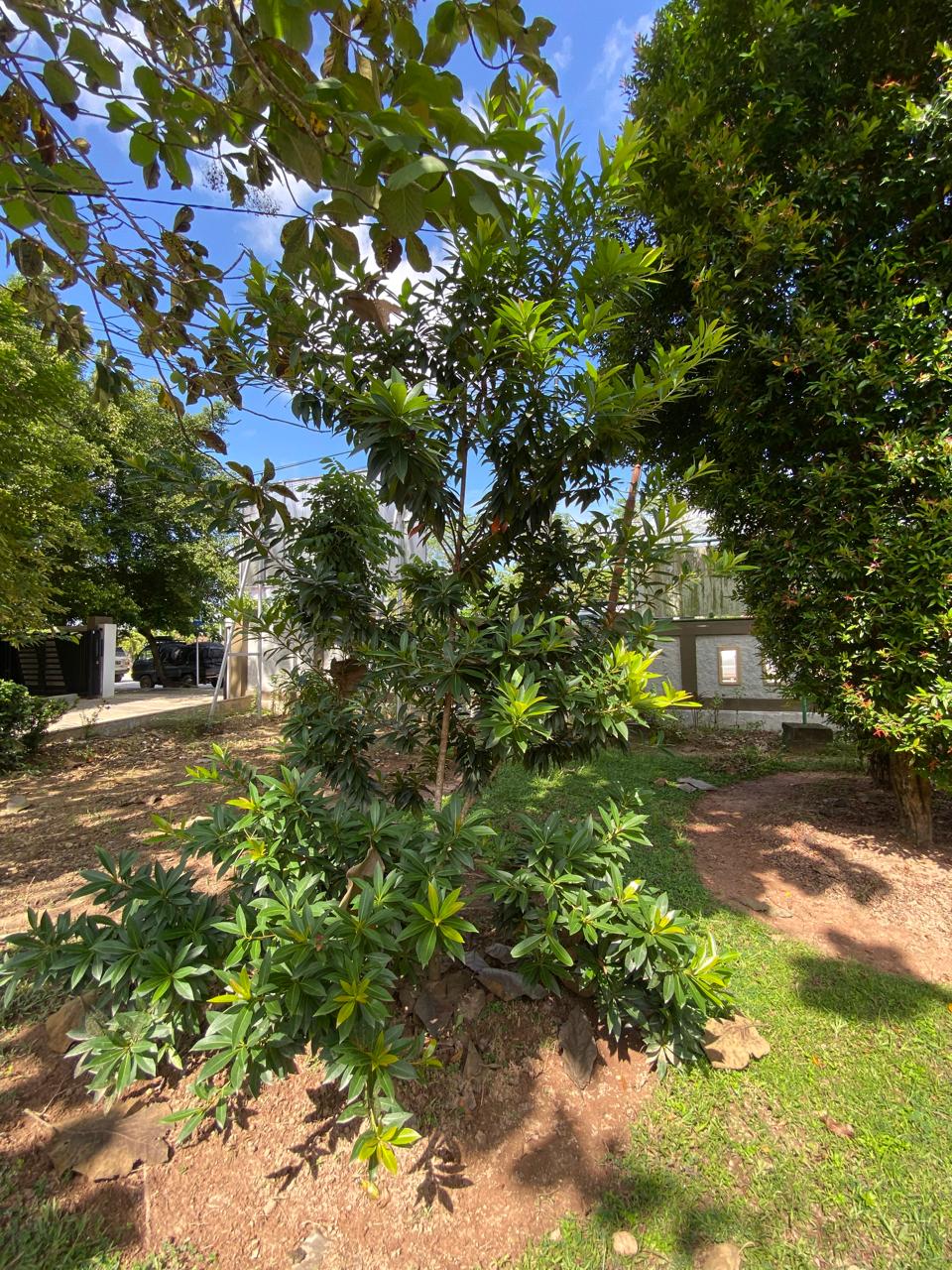Manilkara zapota (L.) P.Royen, Blumea 7 (1953)
Famili : Sapotaceae
Spesies : Manilkara zapota (L.) P. Royen, Blumea 7 (1953)
Local Name :
- Cambodia: lomut.
- English: Sapodilla, naseberry.
- French: Sapotillier.
- Indonesia: sawo manila, ciku (Sundanese), sawo londo (Java).
- Laos: lamud.
- Malaysia: ciku.
- Philippines: chico.
- Thailand: lamut, lamut-farang.
- Vietnam: xaboche, hong xiem, ta lu'c.
Description : Evergreen, upright to spreading tree, 5-20(-30)m tall, all parts rich in white gummy latex; trunk low-branched, bark rough, dark-brown, crown globose or pyramidal, conforming to Aubreville's architectural model. Leaves alternate, ovate-elliptic to oblong-lanceolate, 3.5-15 cm x 1.5-7 cm, cuneate or obtusely acuminate at both ends, frequently emarginate, entire, glabrescent, glossy dark green, midrib prominent below, lateral nerves numerous, parallel; petiole 1-3.5 cm long. Flowers solitary in upper leaf axils, usually pendulous, up to 1.5 cm in diameter, brown-hairy outside; pedicel 1-2 cm long; calyx deeply 6-parted, usually in two whorls, densely gray or brown tomentose outside; corolla white, campanulate, 6 lobes about half as long as the tube; staminodes 6, petaloid; stamens 6; ovaries 10-12-celled, villous; style subulate, extracted from the flower. Fruit a pendulous berry, globose, ovoid or ellipsoid, 3-8 cm x 3-6 cm, rounded or impressed at base, apex rounded and crowned by the remnants of the style; skin thin, dull reddish to yellow-brown, covered with a sandy brown scurf; flesh juicy, soft, yellow to red-brown, sweet. Seeds 0-6(-12), oblong, 2 cm long, brown or black, compressed laterally, hilum distinct. [From PROSEA]
Ecology : Sapodilla is a very adaptable species. It thrives in the tropics, but is found in large numbers at elevations up to 2500 m in Ecuador and also in the subtropics (Israel); mature trees are not greatly damaged by a few degrees of frost. Sapodilla is very drought-resistant, doing well in the taxing monsoon climates of India. With its tough branches the tree tolerates strong winds and salt sprays close to the seashore. However, growth and fruit quality are impaired in extreme environments; the tree thrives in warm, moist tropical lowlands, usually below 600 m in South-East Asia. The best soil for sapodilla is a rich, well drained, sandy loam, but few soils are unsuitable and sapodilla comes second after the date palm in the category of fruit trees with high tolerance of saline soils.

